DJI Mini 5 Pro vs Mini 4 Pro vs Skyrover X1 Drone: Half Chrome Breaks Down The Key Differences
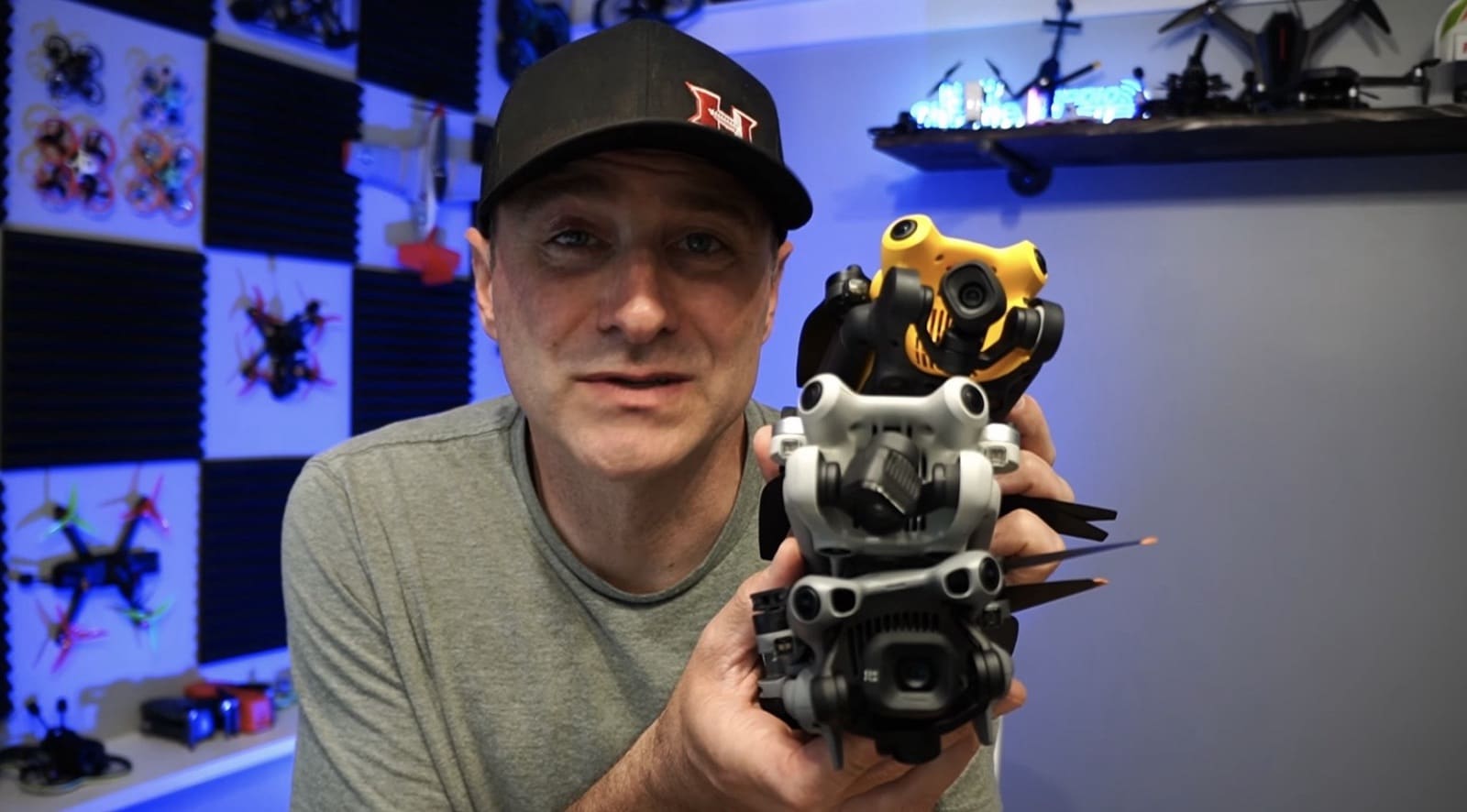
Drone content creator Jack Towne from Half Chrome has released a detailed comparison between the DJI Mini 5 Pro and Mini 4 Pro and the Skyrover X1, revealing critical differences between the three drones—and confirming what many pilots suspected: all three exceed the crucial 250-gram weight limit.
In his latest video, Towne tests both DJI drones side-by-side while also introducing the Skyrover X1 mini drone as a readily available alternative for U.S. pilots struggling to acquire DJI’s mini drones amid ongoing availability issues.
Bigger Sensor, Better Gimbal: The Mini 5 Pro’s Main Advantages
The standout upgrade on the Mini 5 Pro centers on imaging capability. According to Towne’s testing, “It has a larger 1-inch sensor and it actually has a new gimbal. This gimbal will do a full rotation.”
While the DJI Mini 4 Pro already offered native 9:16 vertical shooting through 90-degree rotation, the Mini 5 Pro takes it further. The new gimbal rotates 180 degrees in one direction and 45 degrees in the opposite direction, creating more dynamic shooting possibilities.
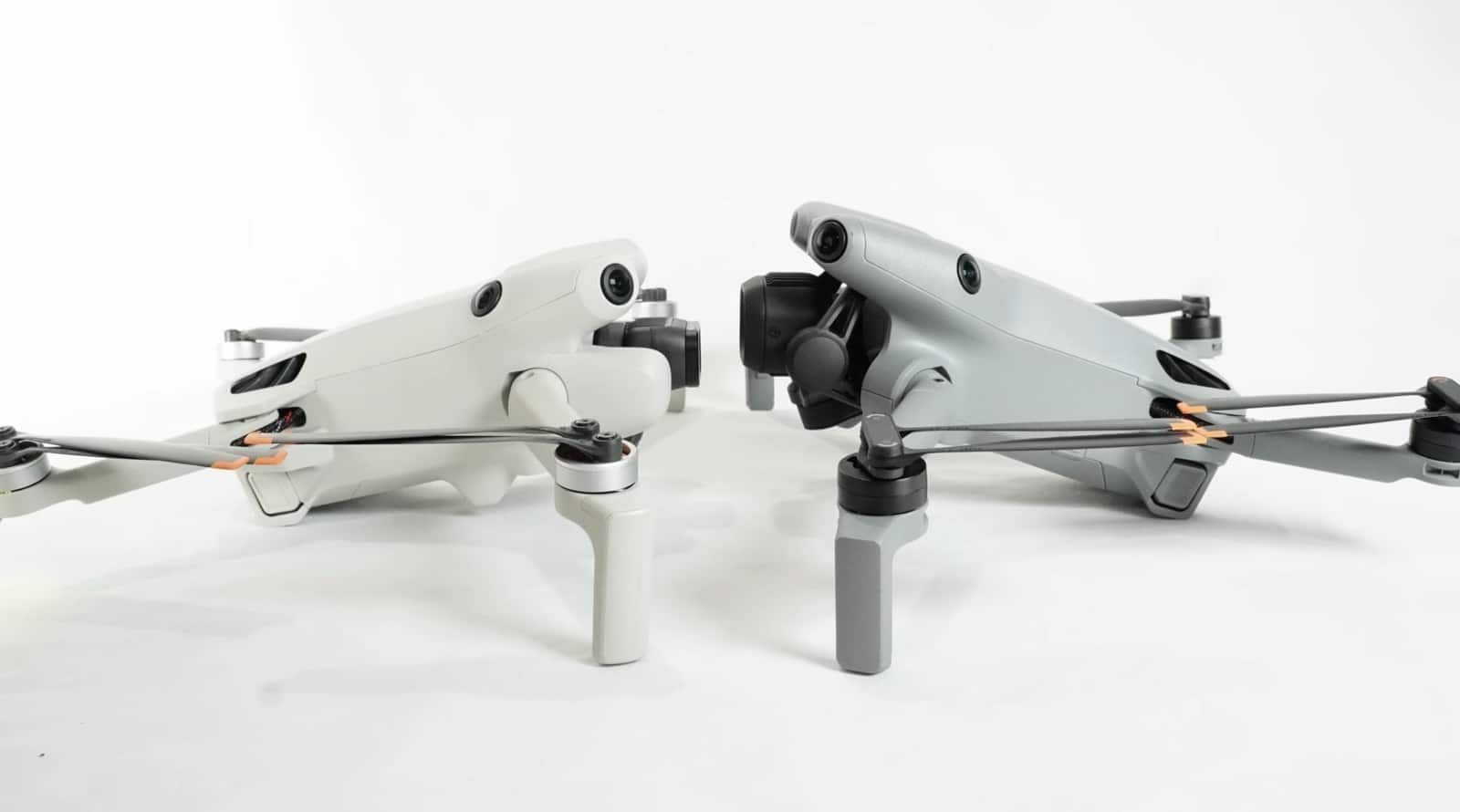
Towne filmed identical shots in 4K 30fps with both drones to compare image quality. “Both of these drones have excellent cameras,” he noted, explaining that in good daylight conditions, most pilots would struggle to pick a clear winner.
However, the differences become obvious in challenging lighting. “If you take shots at night or even just kind of darker, they’re not going to look as good,” Towne explained, pointing to the DJI Mini 5 Pro’s clear advantage in low-light scenarios. “The tree on the Mini 5 looks a little bit better. And I think it’s easier to tell when you take pictures.”
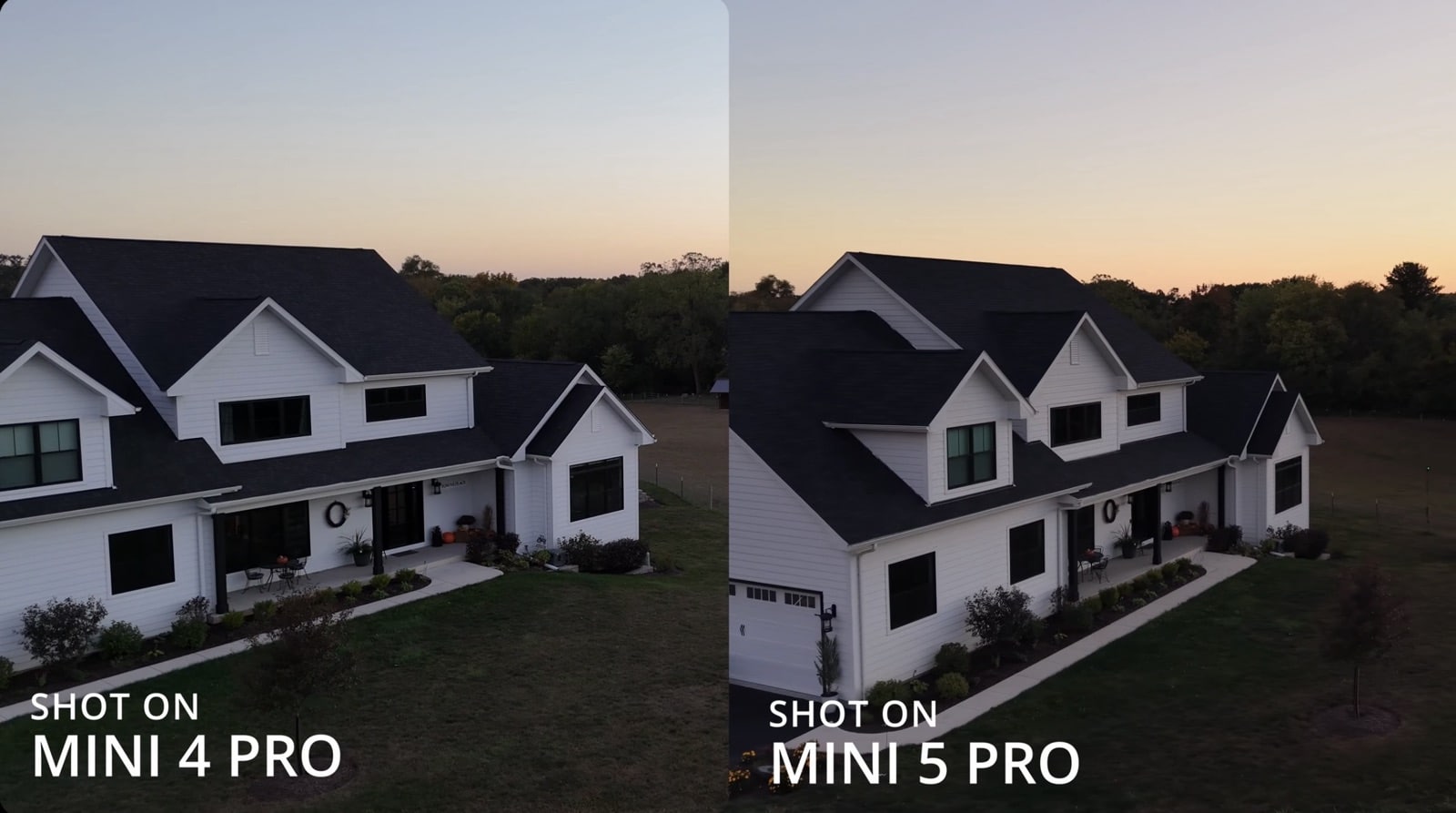
The larger 1-inch sensor delivers 50 megapixels compared to the Mini 4 Pro’s 48 megapixels, though Towne noted this difference is largely semantic given both use quad Bayer technology based on 12-megapixel sensors.
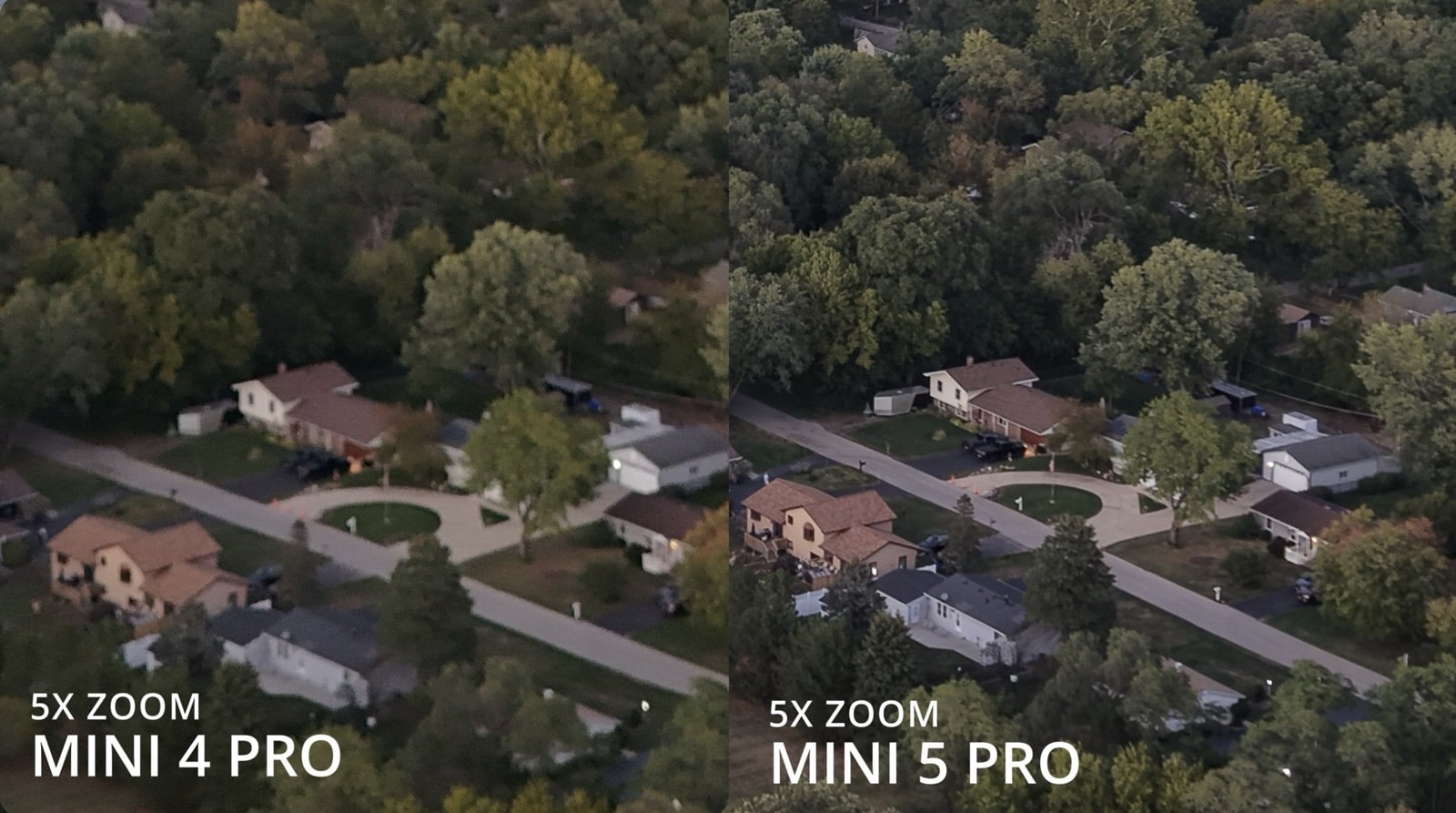
Additional Improvements: Storage, Flight Time, and Connectivity
Beyond the camera, the Mini 5 Pro introduces several practical enhancements. Internal storage jumps from a nearly useless 2GB on the Mini 4 Pro to 42GB, providing meaningful backup capacity when pilots forget SD cards.
Battery performance improves to 36 minutes on standard batteries, or 52 minutes with extended batteries. The drone features DJI’s O4 Plus transmission system, offering the same 20 km (12.4 miles) range as the Mini 4 Pro but with improved signal reliability. “It just works a little bit better,” Towne observed.
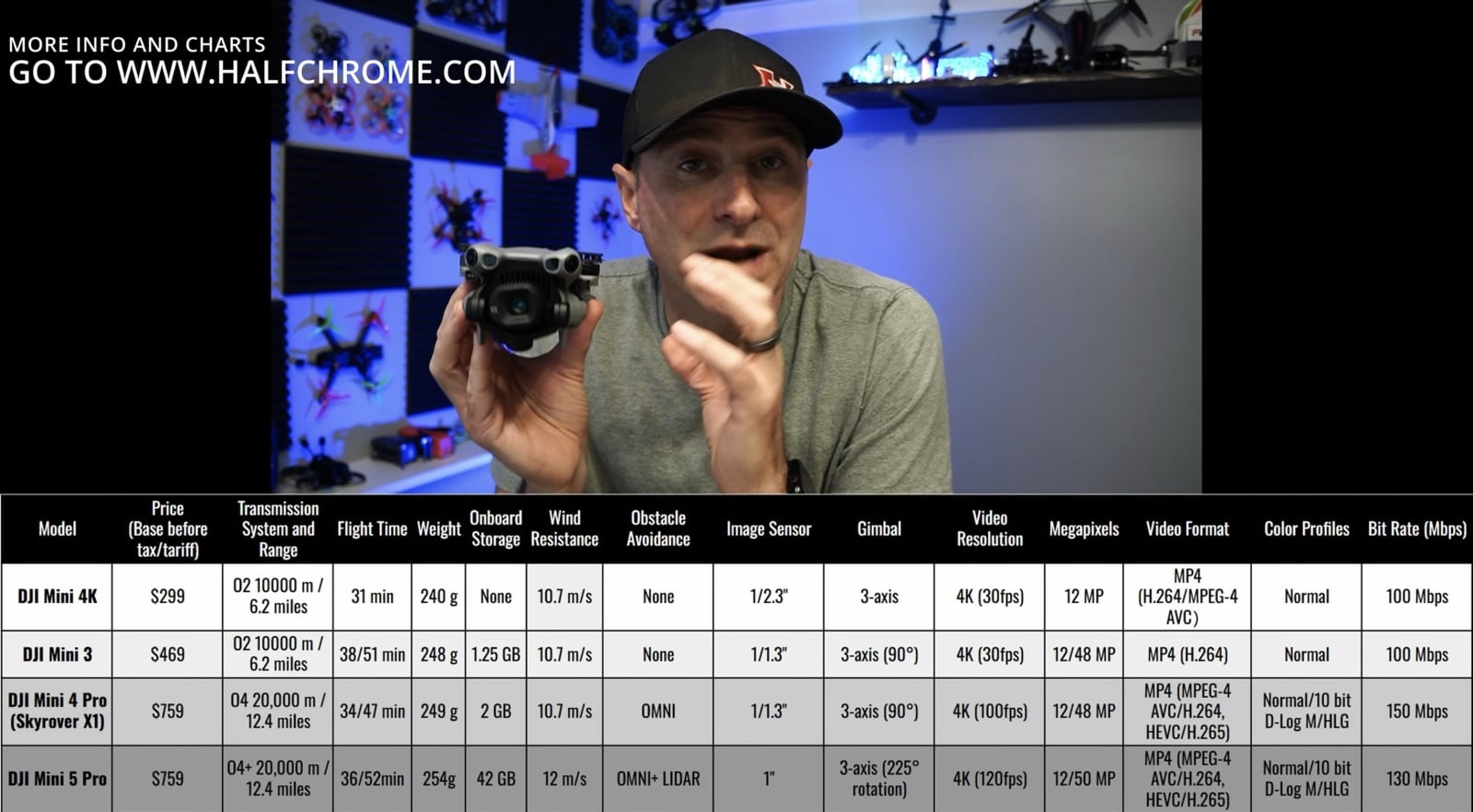
Wind resistance increases to 12 m/s (26.8 mph) from the Mini 4 Pro’s 10.4 m/s (23.3 mph), and the drone now supports 120fps slow-motion recording versus 100fps on the older model.
Towne praised one quality-of-life improvement: “When you unfold it, it turns on. When you fold it back down, it closes up. So you can get this thing up in the air just a little bit quicker.” The quick-release propellers also differ from the twist-on design of the Mini 4 Pro, and ND filters now clip over the camera rather than screwing on.

The Weight Problem: Both Drones Exceed 250 Grams
Addressing a hot topic in the drone community, Towne put both drones on a scale. The results confirm what many pilots feared: “Checking in at 253 g. It’s over by 3 g, so it’s not under that magic 250 g number,” he reported for the Mini 5 Pro.
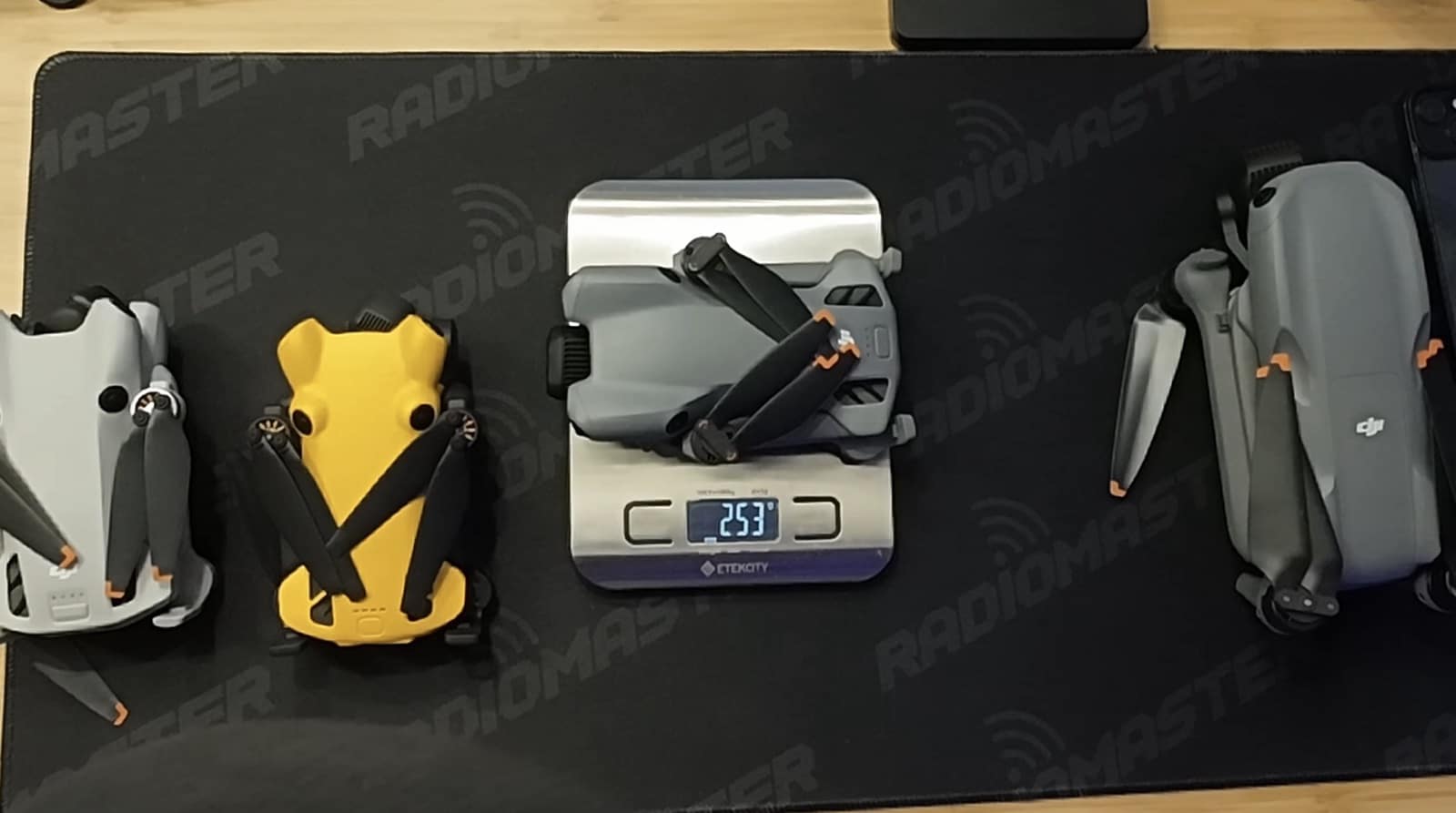
The Mini 4 Pro fared slightly better at 251 grams, but still exceeded the regulatory threshold. For comparison, the Skyrover X1 weighed exactly 250 grams—also technically over the limit.
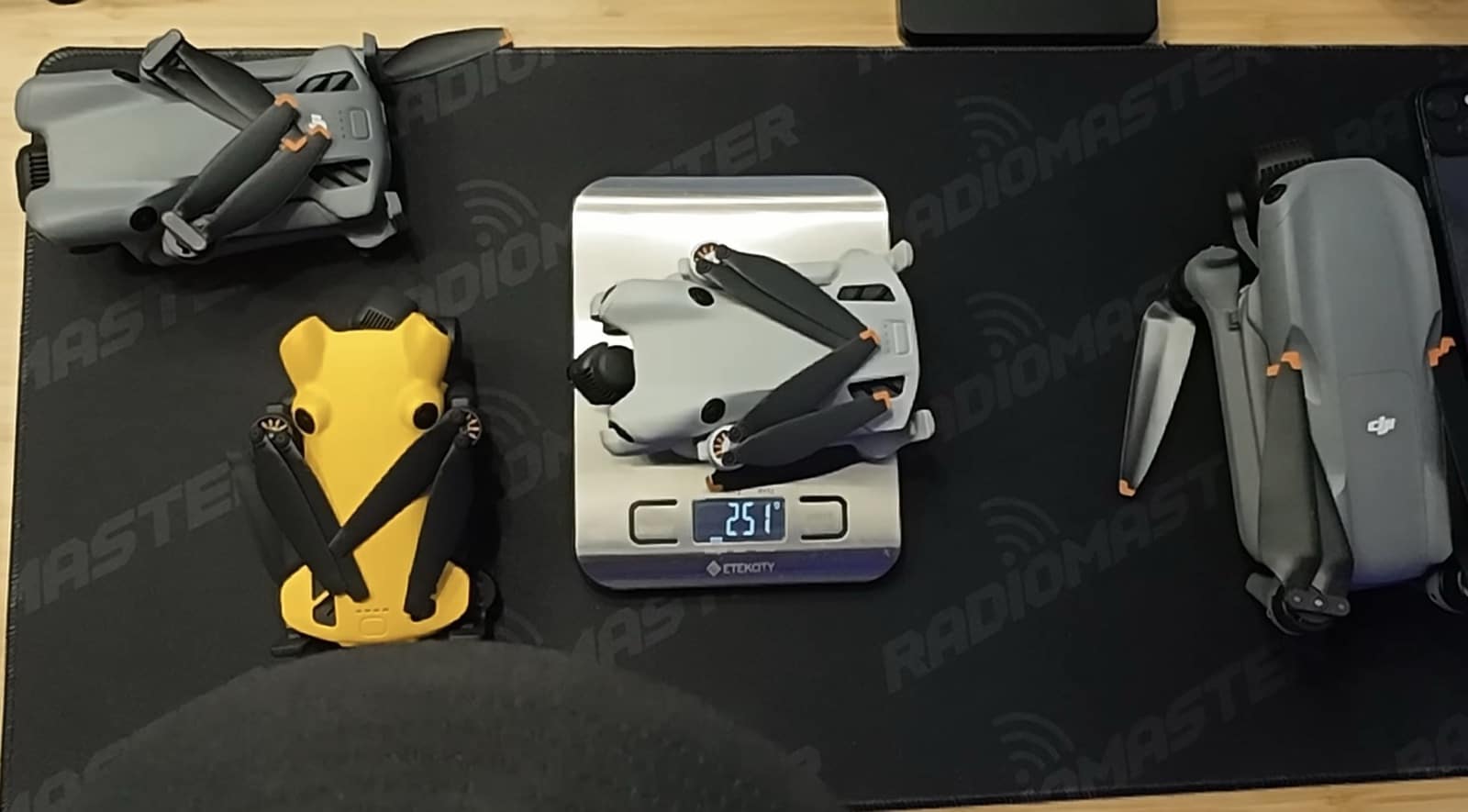
“Are we worried about 2 3 g? I don’t know. Is anyone actually ever checking that?” Towne questioned, though FAA regulations provide no tolerance for exceeding 250 grams under U.S. law, unlike European EASA rules.
Interestingly, the Skyrover X1 mini drone came in at the lowest weight of only 250 grams.
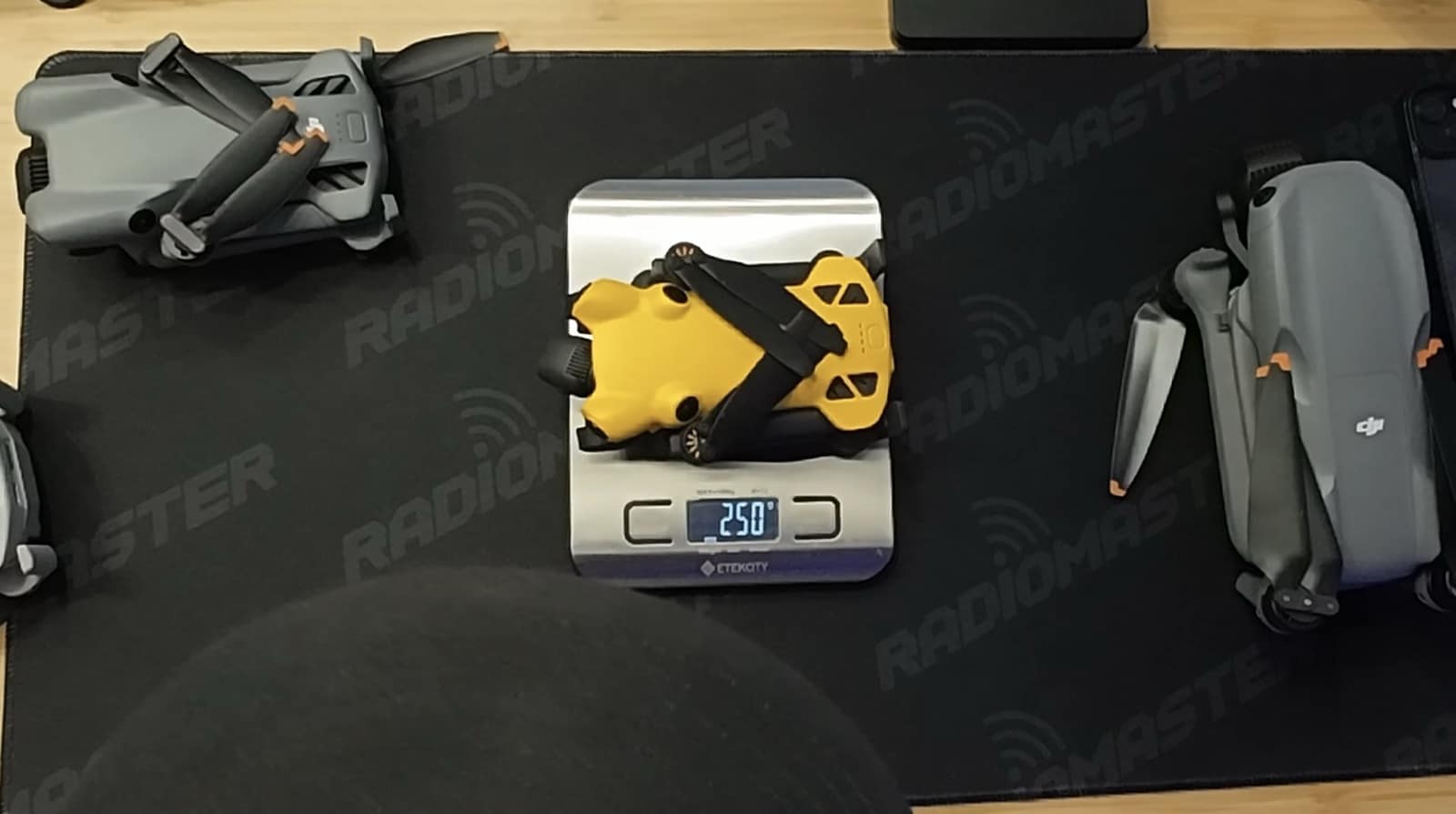
U.S. Availability: The Elephant in the Room
The most significant issue for American pilots is accessibility. “The Mini 5 Pro was not released in the United States. The Mini 4 Pro was,” Towne explained, though he noted both remain difficult to obtain through official channels.
Towne purchased his Mini 5 Pro through eBay from a reputable seller, paying approximately $90 for shipping. “Total about $1,200 for the FlyMore combo. Not ridiculous. That’s including shipping,” he said.

Skyrover X1: The Available Alternative
This availability gap led Towne to discuss the Skyrover X1, which he described as “essentially a DJI Mini 4 Pro.” The key difference? “You can actually buy this one. This one is available on Amazon.”
The Skyrover X1 is an OEM product, meaning DJI licensed the technology to Sky Rover for sale on Amazon. Security researchers have confirmed the drone uses DJI infrastructure and performs identically to the Mini 4 Pro.
“I’ve flown them all. They’re all really good drones,” Towne concluded.
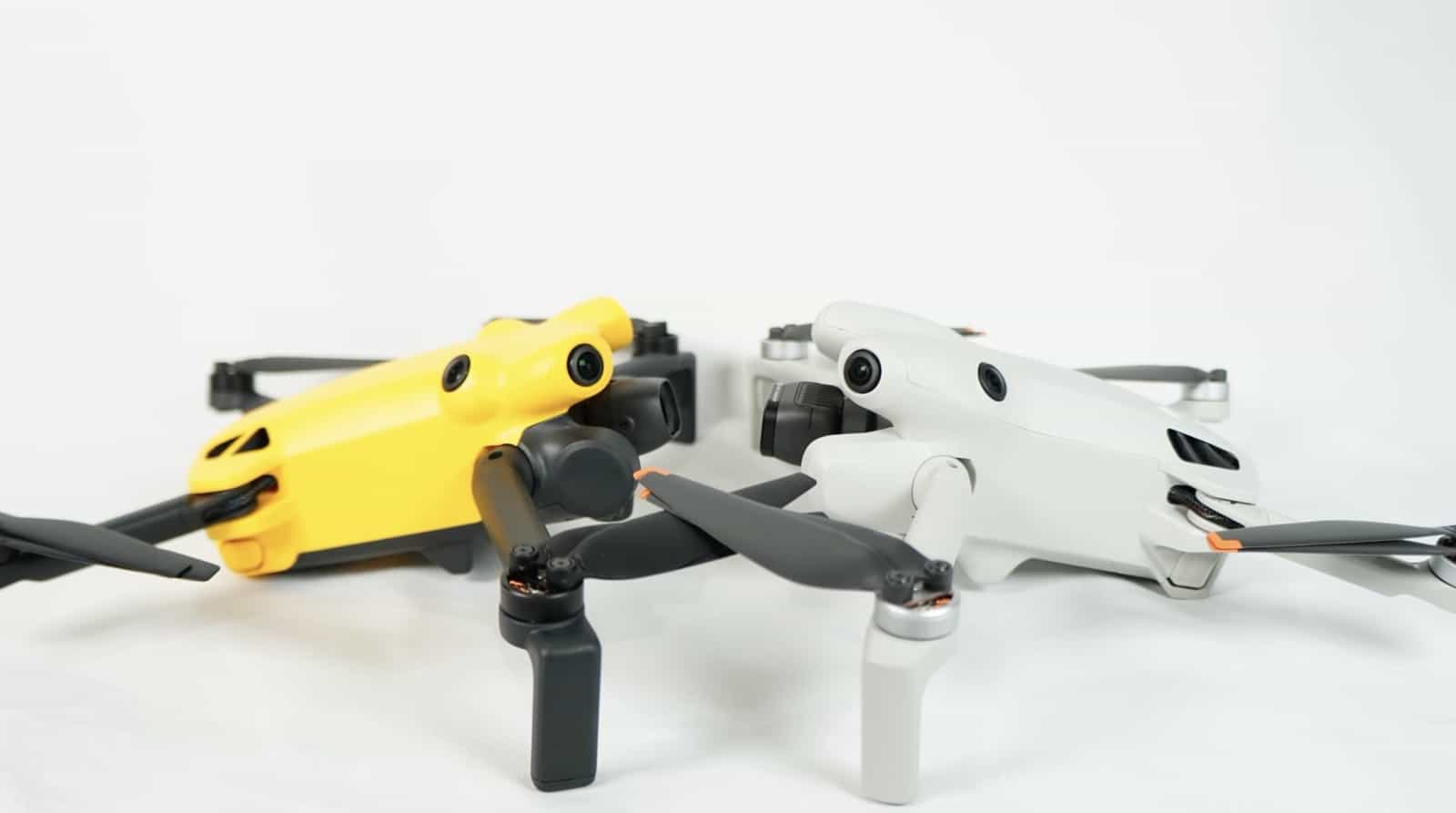
DroneXL’s Take
Jack Towne’s comparison arrives at a critical moment for U.S. drone pilots. The Mini 5 Pro represents a genuine leap forward in the sub-250g category—that larger sensor and versatile gimbal make real differences for content creators who need low-light performance and creative framing options. The O4 Plus connectivity improvements and doubled internal storage address practical pain points Mini 4 Pro owners have complained about.
But here’s the reality: most American pilots can’t simply walk into a store and buy either drone. The Mini 5 Pro never officially launched in the U.S. due to what DJI calls a “customs-related misunderstanding” with U.S. Border Protection, separate from the security review legislation hanging over the company’s head. The Mini 4 Pro, while technically released here, has been virtually impossible to find at retail for months.
This creates a frustrating situation where pilots must choose between paying inflated eBay prices with uncertain warranty support, making cross-border trips to Canada or Mexico, or settling for OEM alternatives like the Skyrover X1. That last option isn’t necessarily settling—by all accounts, the X1 delivers genuine DJI performance at a lower price point. But it highlights how trade tensions and regulatory uncertainty are reshaping the consumer drone market in ways that hurt American pilots more than they solve any stated security concerns.
The weight issue adds another layer of complexity. Both drones technically require FAA registration despite their sub-250g marketing, though as Towne points out, enforcement of a few grams over the limit seems unlikely in practical recreational flying scenarios. Still, it’s a frustrating detail for pilots who specifically sought these drones to avoid registration requirements.
What do you think? Share your thoughts in the comments below.
Discover more from DroneXL.co
Subscribe to get the latest posts sent to your email.
Check out our Classic Line of T-Shirts, Polos, Hoodies and more in our new store today!

MAKE YOUR VOICE HEARD
Proposed legislation threatens your ability to use drones for fun, work, and safety. The Drone Advocacy Alliance is fighting to ensure your voice is heard in these critical policy discussions.Join us and tell your elected officials to protect your right to fly.
Get your Part 107 Certificate
Pass the Part 107 test and take to the skies with the Pilot Institute. We have helped thousands of people become airplane and commercial drone pilots. Our courses are designed by industry experts to help you pass FAA tests and achieve your dreams.

Copyright © DroneXL.co 2025. All rights reserved. The content, images, and intellectual property on this website are protected by copyright law. Reproduction or distribution of any material without prior written permission from DroneXL.co is strictly prohibited. For permissions and inquiries, please contact us first. DroneXL.co is a proud partner of the Drone Advocacy Alliance. Be sure to check out DroneXL's sister site, EVXL.co, for all the latest news on electric vehicles.
FTC: DroneXL.co is an Amazon Associate and uses affiliate links that can generate income from qualifying purchases. We do not sell, share, rent out, or spam your email.




















“confirming what many pilots suspected: all three exceed the crucial 250-gram weight limit.”
then
“The Weight Problem: Both Drones Exceed 250 Grams”
My Mini 4 Pro with the standard battery tested on multiple relatively precise scales is 249g exactly (believe me – I did a double take on that as well). While I’m absolutely sure there are M4Ps out there over the 250g limit, given that no one seems to have noticed this in two years suggests it’s uncommon.
Now, the M4P with the Plus batteries are definitely over 250g – same with almost any accessory like strobes or even DJI’s own prop guards.
The annoying part is that the solution is trivial: DJI should offer a lighter, shorter flight time battery for those of us who want to stay under 250g and don’t actually fly our drones for 35mins at a time (or fly 10kms away). As I noted before, they actually did do that for the M4P in Japan where the cutoff is lower, but made those batteries exclusively available in Japan.
I’m seriously tempted to see if I can import a set because in most countries, as long as the take-off weight is under 250g, you’re ok. But until I can get some solution, I’m not buying the M5P – my M4P is just fine. I’m not ready to trade all the advantages of sub-250g drone operation for a few extra bells and whistles.
Maybe when the M6P ships in two years. 🙂
Which ebay did he use on the DJI Mini 5 Pro comb. Because there are so many out there that aren’t legitimate and I don’t want to chance .
The biggest issue with mini 5 is no Goggles 3 compatibility. That’s a deal breaker for me.
If the SkyRover X1 could fly with the DJI RC2 controller, that would be nice. Out of the box, it needs a phone for the display. The color of the X1 is a huge win over the gray/beige DJI colors.